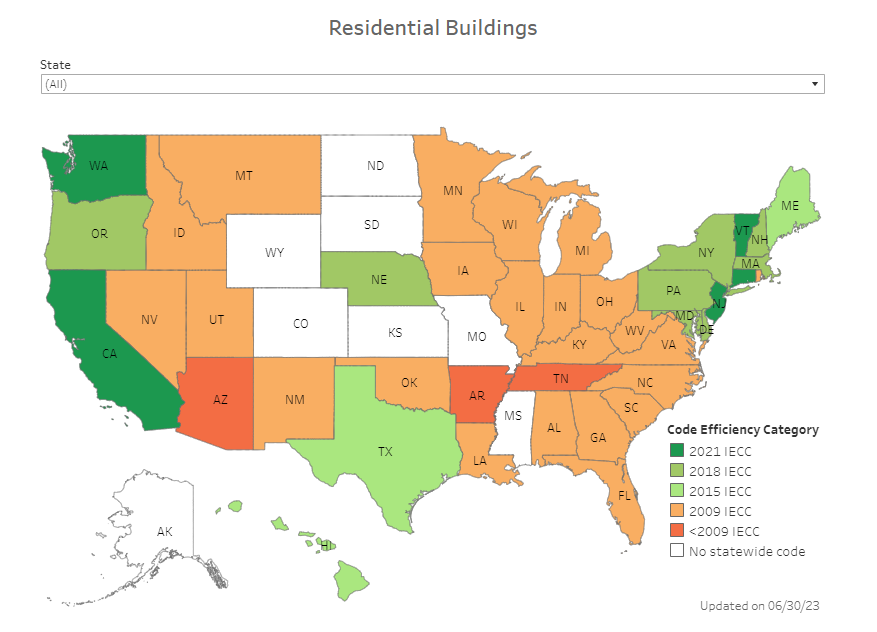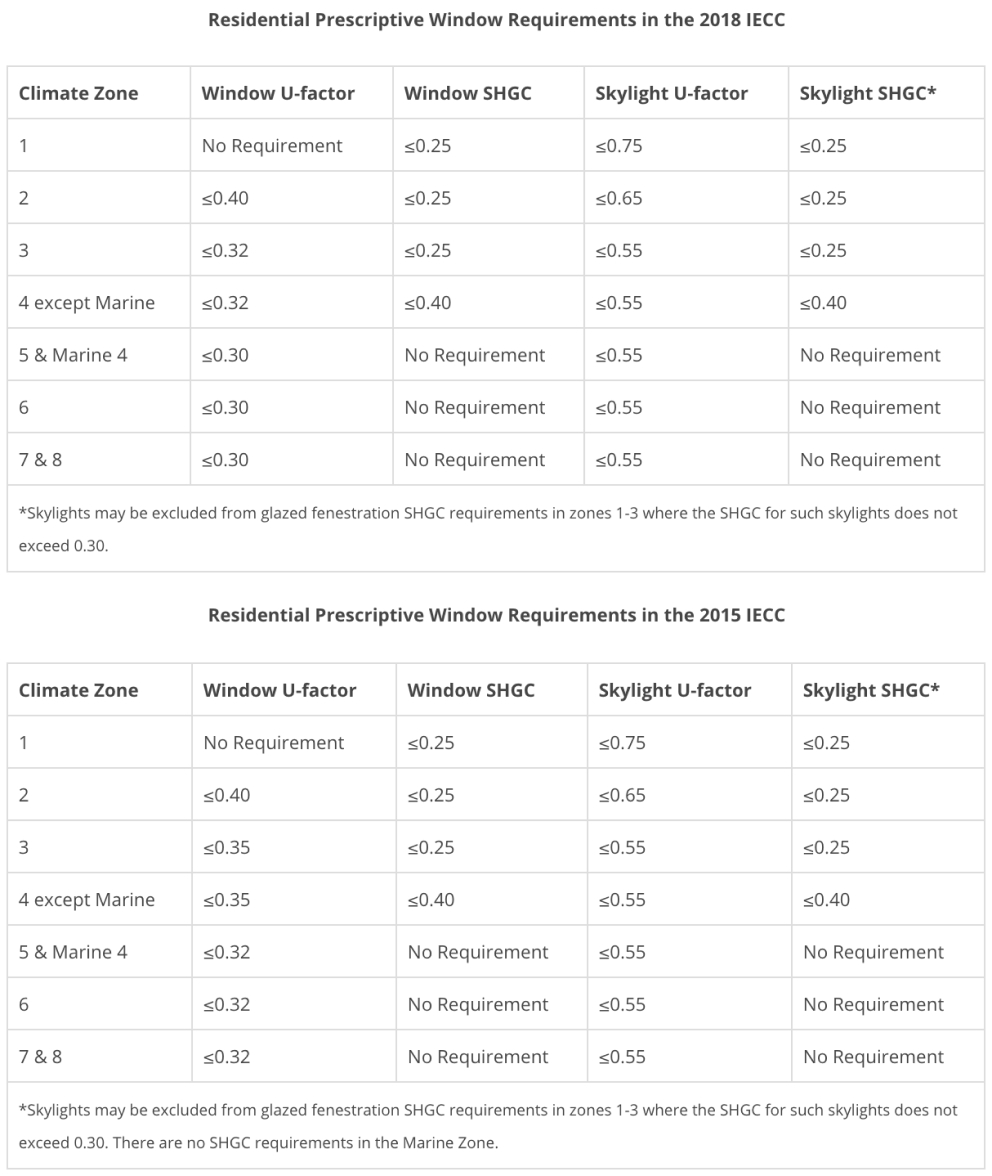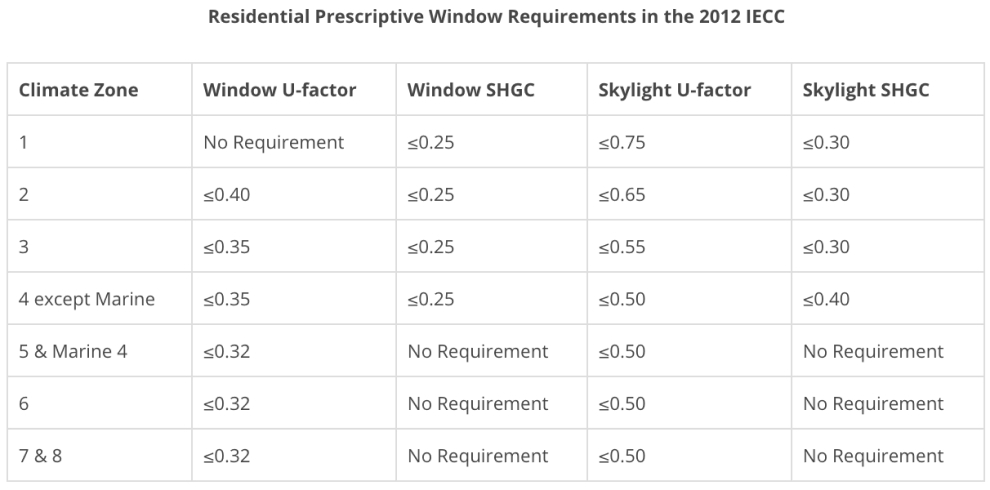
Building Codes Overview
Model Energy Codes
With a few exceptions, most jurisdictions do not write their own building energy codes from scratch. Instead, they rely on model energy codes developed by national code writing entities. National code-writing entities modify model energy codes every few years, and jurisdictions may adopt any version of a model code, whether in whole or with modifications. For residential buildings, jurisdictions most often adopt a version of the International Energy Conservation Code (IECC); the latest edition was published in 2021 and is currently under consideration by the states as well as a recently issued positive determination by the U.S. Department of Energy (DOE). For commercial buildings, IECC exit disclaimer and ASHRAE Standard 90.1 are typically used.
Windows in Building Energy Codes
Energy efficiency requirements for windows vary not only by jurisdiction but also by climate. In the 2006 IECC and later, this variation was based on eight climate zones, with each county assigned to one climate zone. However, older versions of the IECC specify 19 different climate zones. Each model energy code establishes specific U-factor maximums for fenestration (with separate requirements for skylights) and SHGC maximums for all glazed fenestration.
View state-specific code guides describing how to meet the requirements of different versions of the IECC.


